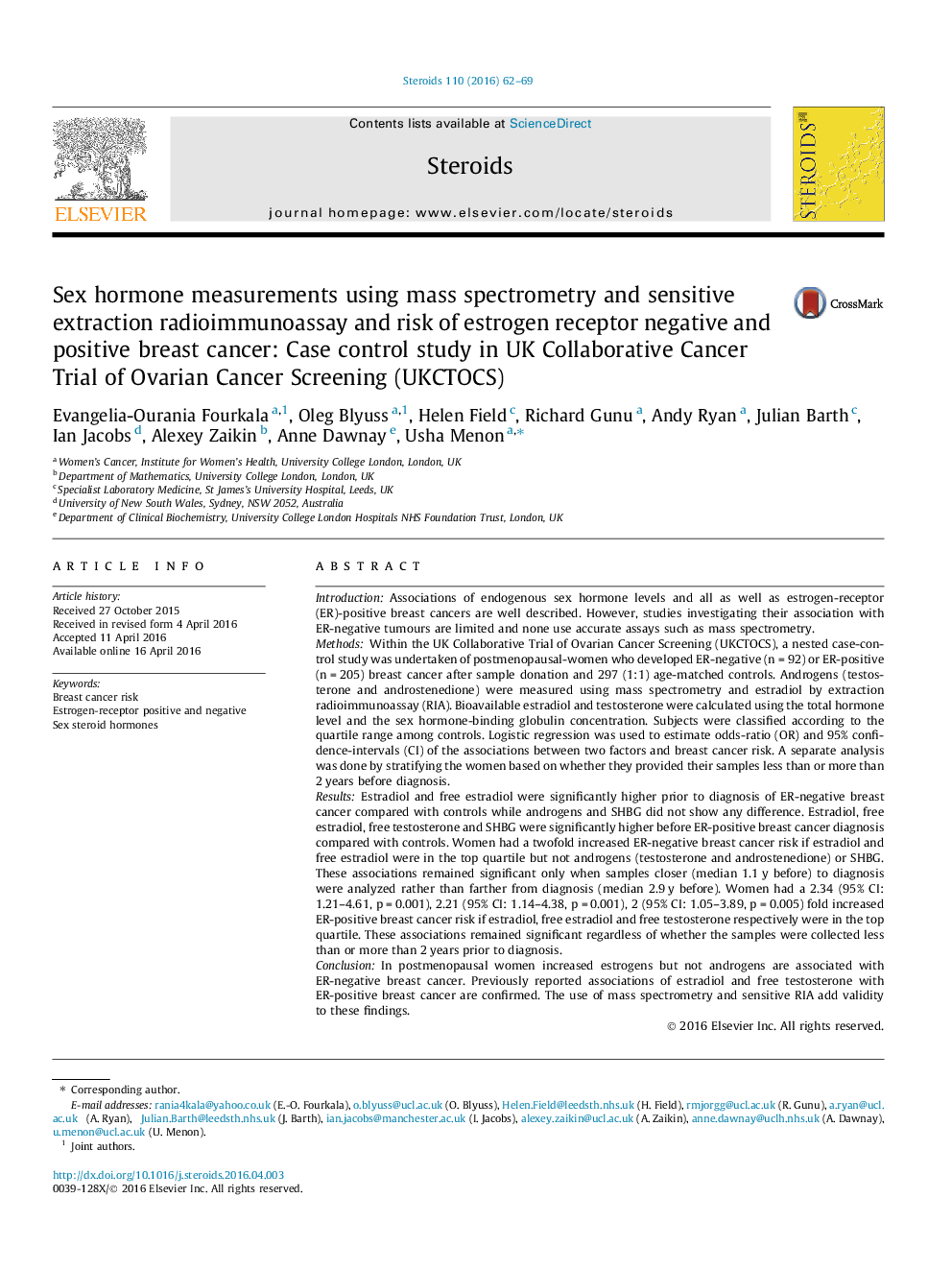| کد مقاله | کد نشریه | سال انتشار | مقاله انگلیسی | نسخه تمام متن |
|---|---|---|---|---|
| 2027608 | 1542698 | 2016 | 8 صفحه PDF | دانلود رایگان |

• Estradiol and free estradiol were significantly higher prior to diagnosis of ER-negative breast cancer compared with controls.
• Estradiol, free estradiol, free testosterone and SHBG were significantly higher before ER-positive breast cancer diagnosis compared with controls.
• Women had a twofold increased ER-negative breast cancer risk if estradiol and free estradiol were in the top quintile but not androgens or SHBG.
• These associations remained significant only when samples closer to diagnosis were analyzed rather than farer.
IntroductionAssociations of endogenous sex hormone levels and all as well as estrogen-receptor (ER)-positive breast cancers are well described. However, studies investigating their association with ER-negative tumours are limited and none use accurate assays such as mass spectrometry.MethodsWithin the UK Collaborative Trial of Ovarian Cancer Screening (UKCTOCS), a nested case-control study was undertaken of postmenopausal-women who developed ER-negative (n = 92) or ER-positive (n = 205) breast cancer after sample donation and 297 (1:1) age-matched controls. Androgens (testosterone and androstenedione) were measured using mass spectrometry and estradiol by extraction radioimmunoassay (RIA). Bioavailable estradiol and testosterone were calculated using the total hormone level and the sex hormone-binding globulin concentration. Subjects were classified according to the quartile range among controls. Logistic regression was used to estimate odds-ratio (OR) and 95% confidence-intervals (CI) of the associations between two factors and breast cancer risk. A separate analysis was done by stratifying the women based on whether they provided their samples less than or more than 2 years before diagnosis.ResultsEstradiol and free estradiol were significantly higher prior to diagnosis of ER-negative breast cancer compared with controls while androgens and SHBG did not show any difference. Estradiol, free estradiol, free testosterone and SHBG were significantly higher before ER-positive breast cancer diagnosis compared with controls. Women had a twofold increased ER-negative breast cancer risk if estradiol and free estradiol were in the top quartile but not androgens (testosterone and androstenedione) or SHBG. These associations remained significant only when samples closer (median 1.1 y before) to diagnosis were analyzed rather than farther from diagnosis (median 2.9 y before). Women had a 2.34 (95% CI: 1.21–4.61, p = 0.001), 2.21 (95% CI: 1.14–4.38, p = 0.001), 2 (95% CI: 1.05–3.89, p = 0.005) fold increased ER-positive breast cancer risk if estradiol, free estradiol and free testosterone respectively were in the top quartile. These associations remained significant regardless of whether the samples were collected less than or more than 2 years prior to diagnosis.ConclusionIn postmenopausal women increased estrogens but not androgens are associated with ER-negative breast cancer. Previously reported associations of estradiol and free testosterone with ER-positive breast cancer are confirmed. The use of mass spectrometry and sensitive RIA add validity to these findings.
Journal: Steroids - Volume 110, June 2016, Pages 62–69